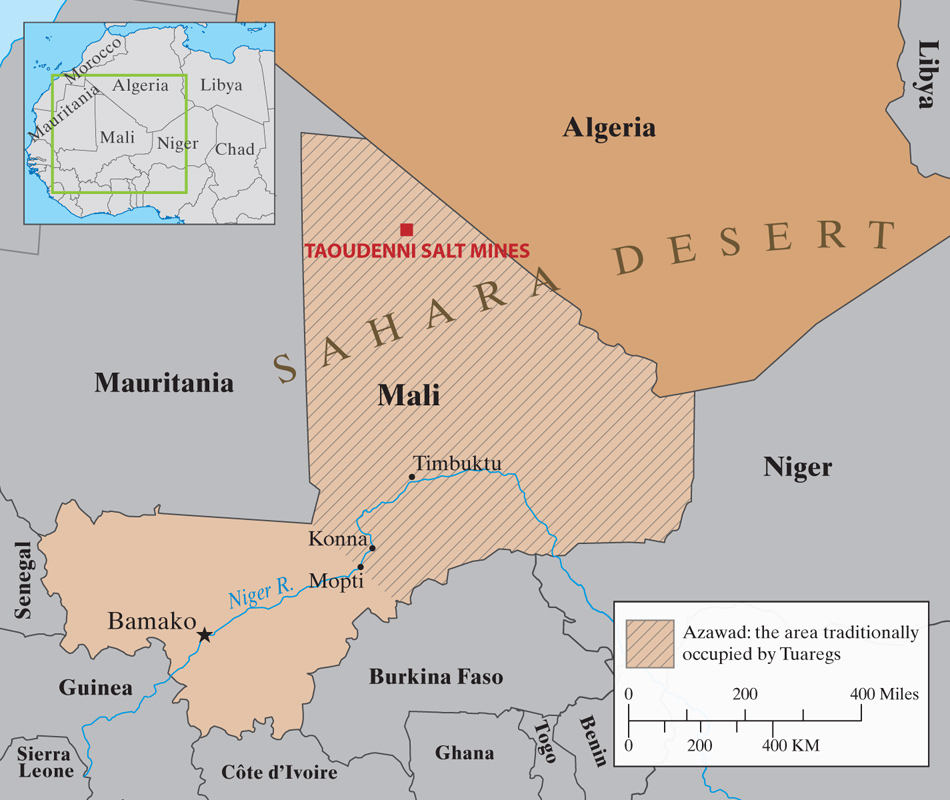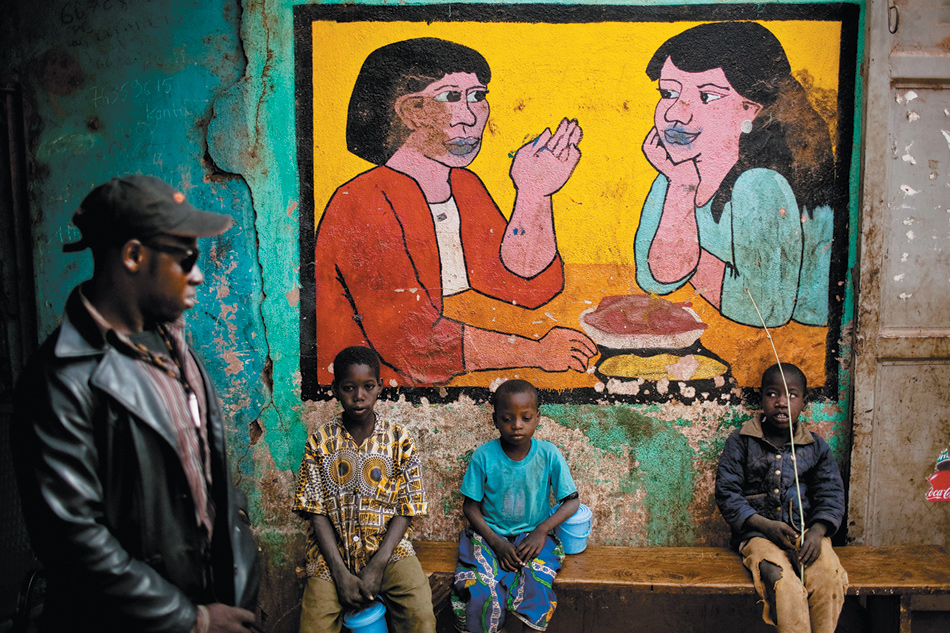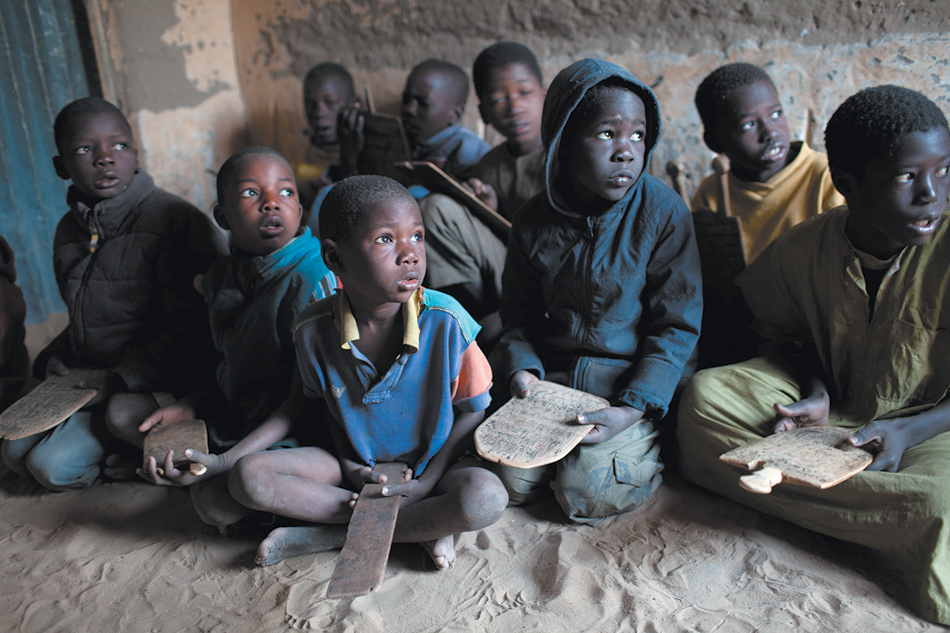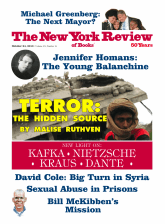Secluded amid a sea of sand dunes at the edge of the Sahara, the Maison de Qaddafi, or Qaddafi’s Palace, was once considered the most desirable piece of real estate in Timbuktu, the ancient town in the northwest of Mali, one of Africa’s largest and poorest countries. Constructed by the Libyan dictator between 2006 and 2007 as an African outpost, it is a low-slung, Moorish-style villa of beige concrete, with oblong windows and turquoise ornamental trim, surrounded by a garden of pine and palm trees. Qaddafi decided to build his palace on the exact spot where Jacques Chirac had been feted by traditional chiefs in a Bedouin tent during his 2003 West African tour. “We still call it ‘Chirac’s Dune,’” my Tuareg acquaintance, Azima Ag Ali Mohammed, told me, leading me down a sandy track to the front gate. “Qaddafi was jealous of Western leaders, and he wanted to prove that he was their equal.”
After Libyan rebels captured and executed Qaddafi in October 2011, the villa fell into disrepair. Seven months later, Tuareg guerrillas and jihadists, some from Libya, swept into Timbuktu. In April 2012, Abdulhamid Abu Zeid, leader of the Mali-based al-Qaeda in the Islamic Maghreb, took possession of the villa. The al-Qaeda commander strung black flags from the windows and moved in with two terrified French hostages, whom he had seized in Niger two years earlier.
Abu Zeid didn’t stay for long, however. French warplanes dropped rockets on the villa last January, sending Abu Zeid, his prisoners, and fellow jihadists fleeing into the desert, and putting an end to al-Qaeda’s ten-month occupation of Timbuktu. (The hostages are still being held.) Azima and I squeezed through a gap in the gate and walked unhindered through the front entrance. “This is where the jihadists held their meetings,” he said, leading me into a large salon divided up by concrete columns. Shards of glass, marble tile fragments, and chunks of concrete littered the floor. Broken roof slabs blocked the view of the garden. The entire rear wing of the villa had collapsed after taking a direct hit by a missile. As I walked gingerly around the house—skirting the charred remains of a Nissan sedan, bullet casings, and rubber hoses from Qaddafi’s irrigation system—I heard a rustling. I looked up, startled, to see a white-robed herdsman leading six donkeys up and over the huge pile of rubble. “Salaam aleikum,” he said, with a deferential nod of his head, then continued on his way.
Eight miles above the northernmost bend of the Niger River, at the edge of the Sahara Desert, the somnolent and decrepit town of Timbuktu has long held a mystical appeal for outsiders. Few were more entranced than the Libyan dictator, who declared Timbuktu to be his “favorite city” and lavished millions on a megalomaniacal effort to shape it to his vision. In 2006, on the occasion of the Prophet Muhammad’s birthday, he declared himself the imam of Timbuktu and flew in hundreds of Africans, including heads of state, to pray with him in a soccer stadium. He purchased Timbuktu’s crumbling Sofitel Hotel and spent extravagantly to renovate it, and in 2007, he had an eight-mile-long canal dug from the Niger River to the hotel entrance that would enable guests to travel all the way to the Sofitel by motorized long boats, known as pinasses.
Qaddafi’s deep interest in Timbuktu remains a source of speculation and bewilderment. It was said that he believed there was oil in the desert, that he had a hand in the covert narcotics trade being run by al-Qaeda from nearby Sahara landing strips, and that he admired Mali’s Tuareg nomads, whom he recruited as mercenaries in the Libyan army. But Qaddafi was undoubtedly also taken by Timbuktu’s dramatic history: an improbable saga of glory, collapse, and rebirth that continues to this day.
In the sixteenth century, Timbuktu’s strategic position on the Niger River made it a crossroads for Saharan salt caravans and ivory, gold, and slave traders from black Africa. The Kingdom of Mali’s Islamic rulers built 180 Koranic schools in the city and black Africa’s greatest Islamic university, Sankore. The population swelled to 100,000 by 1450, including 25,000 Muslim scholars from as far away as Cairo. The Tariqh al-Sudan, a history of Timbuktu written in the seventeenth century, described the city as “a refuge of scholarly and righteous folk, a haunt of saints and ascetics, and a meeting place for caravans and boats.” But by the time the French explorer René Caillie arrived in Timbuktu in 1828, European merchant fleets that sailed along the west coast of Africa had replaced the desert commerce. The city, Caillie wrote, consisted of “a jumble of badly built houses ruled over by a heavy silence.”
Advertisement

Timbuktu continued its decline through French colonial rule. In a foreshadowing of the Tuareg rebellions that would devastate the region a century later, heavily armed nomads, or rezzou, raided camel caravans laden with salt from the Taoudenni mines four hundred miles north of Timbuktu, threatening the city’s sole commercial activity. “The discouragement has become widespread, and if the situation does not improve the salt business will be destroyed. The rapid ruin of Timbuktu will ensue,” wrote R. Laverdure, commander of the Timbuktu region, in a 1908 account of a trans-Saharan military operation aimed at intimidating the bandits. French officers led five hundred Berber troops for two months through “white and sterile sands” to Taoudenni and back, a show of force that “can only have favorable economic benefits for Timbuktu and for the colony as a whole.” But the effect was temporary, and Tuaregs continued to violently resist both French and Malian rule for the next century.
During the past decade Timbuktu began to rouse itself from its stupor. Local collectors rediscovered thousands of ancient Arabic manuscripts that testified to Timbuktu’s pre-colonial traditions of scientific inquiry, jurisprudence, and religious tolerance. South African President Thabo Mbeki, Harvard scholar Henry Louis Gates, and Qaddafi himself helped fund the construction of libraries to conserve and display these literary treasures.* Meanwhile, the Festival au Désert, a three-day outdoor music concert that featured rising Malian stars such as Amadou and Mariam and Habib Koite, began drawing people from around the world to the oasis of Essakane, thirty miles west of Timbuktu.
Timbuktu’s cultural revival didn’t last long. In 2012, armed with weapons plundered from Qaddafi’s arsenals, Tuareg rebels allied with al-Qaeda militants overran Timbuktu. Once again the rundown city became a center of attention. The Tuaregs declared it the capital of their long-sought independent nation, Azawad, and predicted that oil wells in the desert would soon be producing petrodollars. The commanders of al-Qaeda considered Timbuktu to be the linchpin of their jihadist state, a laboratory for the austere caliphate that they hoped to impose across the Sahara.
This summer, six months after French forces drove out the jihadists in a spasm of violence, I made my fourth trip to Timbuktu over the last two decades. The two private airlines that once linked the outpost to the capital, Bamako, had ceased operations, and the chartered flights reserved for United Nations peacekeepers weren’t taking journalists. So I hired a Land Cruiser and followed the Niger River north for 450 miles—a journey that served to underscore the outpost’s isolation and its utter lack of development. At dawn on the second day we reached Konna, a riverside town north of Mopti that had been attacked by the jihadists in January 2013, precipitating the French invasion. On the outskirts pre-adolescent boys played in the skeletal remains of an al-Qaeda ammunition truck, which had been bombed by a French jet during the militants’ desperate retreat.
The paved road ended abruptly north of Konna, replaced by a cratered dirt track. Limestone pinnacles and mesas rose just ahead of us: we had entered the land of the Dogons, an animist tribe that dwells beneath the cliffs. The road, now just two shallow grooves through the sand, ran for another one hundred miles to the bank of the Niger River. Here we caught a rusting car ferry to the opposite bank. Half an hour later we parked, exhausted, in front of L’Auberge du Désert, one of the two functioning hotels in Timbuktu.
The last time I had seen Timbuktu, in January 2009, its hotels were packed, its streets jammed with tourists on their way to the music festival. This time Timbuktu was a forlorn wreck, filled with the bombed-out remains of buildings once occupied by jihadists, uncollected trash, and stagnant pools of water. The place seemed strangely empty: 20 percent of the population, a United Nations official told me, had still not returned from displaced persons camps or the lodgings of friends and relatives in Mauritania and southern Mali. Six months after the jihadists’ withdrawal, the city was getting eight hours of electricity a day, between 7 pm and 3 am. The government was too broke to pay for fuel to run the power plant, and private aid organizations were offering limited help. The Internet hadn’t worked in a year. Shops were empty, restaurants were closed, the libraries were locked, and even the ubiquitous Orange cell-phone stands were deserted; it was impossible to buy a phone recharge card anywhere in the town.
On the day that the jihadists rolled into Timbuktu, April 1, 2012, Boubacar Touré, the owner of the Hotel Bouctou, emerged from his office to see three Land Cruisers, black flags fluttering from their radio antennas, roaring up to the hotel entrance. Out stepped “twelve bearded terrorists from all over the world—Pakistan, Somalia, Saudi Arabia, Mali,” Touré recalled, as we sat in plastic chairs in front of the hotel, a two-story concrete building with a wide terrace facing the desert that had once been Timbuktu’s most popular drinking spot. At the head of the militant group was Abu Zeid, who spoke Arabic “in a soft voice, just like bin Laden,” Touré told me, and who demanded rooms for his men. Touré couldn’t hold back his anger. “I said, ‘Mr. Abu Zeid, for five years tourism has been ruined, my employees and their families are hurting. You are kidnapping tourists, and you are killing them. What are you going to do about it?’ He stared and he stared, and then he and his team stormed off.”
Advertisement
Abu Zeid returned to the Hotel Bouctou the following day. With him was Iyad Ag Ghali, the black-bearded founder of Ansar Dine (“Defenders of the Faith”), a Tuareg movement that had allied itself with al-Qaeda. A former devotee of Malian music who was now known for his piety, Ghali demanded that Touré tear down photographs and discard his liquor. “Destroy everything,” the militant told him. This time, Touré decided that the wisest course was accommodation. As the jihadists looked on, Touré dug a trench behind the hotel, and dumped in it hundreds of bottles of beer and hard liquor. He then smashed the bottles with a hammer.
Ghali and Abu Zeid moved out after four days—they were worried that the hotel would become a military target—but they often returned for strategy sessions. “They would talk about whether to continue the war to Bamako, and how much war materiel they would need,” Touré told me.
They would tell the imams, “We want women with their faces covered, and all men should stop cutting their beards, is that clear?” The imams were frightened, and they would say, “Yes, we understand. It’s clear.”
Ghali—who referred to himself as “the Master of Timbuktu”—seemed driven by a self-deluded sense of destiny. The mayor of Timbuktu, Halle Ousmane, told me as we sat outside the gutted remains of City Hall,
I said [to Ghali], “You have looted all the shops, there’s not a single bit of grain left. How are you going to protect the people?” And he said, “This is a very rich country here, we’re going to export oil from here, and build the nation of Azawad. But right now the fate of the people here is not my problem.”
Once they had settled into their new lodgings—a luxurious respite after years of surviving in desert caves—Abu Zeid and his jihadists began remaking the municipal landscape. The Malian Solidarity Bank (BMS) at one of the town’s major junctions became the headquarters of the Islamic police, who cruised the streets in pickup trucks, searching for violators of sharia law. Unveiled women and teenaged girls were dragged back to the bank and locked for days inside the ATM booth, a tiny cubicle sealed by an iron gate. Thieves would appear before the sharia court in the La Maison hotel—a five-star villa where the Irish musician and global activist Bono had stayed during a January 2012 visit to the music festival in Essakane—and were sentenced to public whippings. The sandy depression behind the Libya Hotel—once Muhammar Qaddafi’s grand canal to the Niger—became the city’s execution and amputation ground.
With a caretaker, I climbed a low rear wall and saw the sand-filled canal. The jihadists used this wasteland to carry out the public shooting of one of their own, a Tuareg militant who had shot a fisherman to death on the banks of the Niger. “They called the whole town, and announced, ‘Today we are killing a man behind the Libya Hotel,’” the caretaker told me. “Everyone showed up, and they shot him, but he wasn’t killed with the first shot, so they shot him a second time.” Later, Timbuktu residents were summoned back to witness the amputation of a thief’s hand. “They put him in a chair, and he was crying,” the caretaker told me. Although it was only the thief’s first offense, “the jihadists thought, we’ve got to do this quick to frighten the population,” Boubacar Touré said. It was a time of growing unrest in Timbuktu: after months of floggings, beatings, and jailings, small groups of protesters were gathering in the streets.
One hot afternoon I drifted through the Djinguereber quarter, a densely populated neighborhood of sand-filled alleys and mud-brick houses, some dating back five hundred years. I passed the former residences of nineteenth-century European adventurers who crossed the Sahara to Timbuktu, at the risk of their lives. These included Alexander Gordon Laing, an officer of Great Britain’s Second West India regiment, who arrived here in 1826 from Algeria disguised as a Muslim trader; he was unmasked and beheaded several weeks later. A block away stood the handsome residence—now a museum—of German explorer Heinrich Barth, who stayed in Timbuktu from 1853 to 1854 under the protection of a wealthy sheikh and was the first European to draw attention to the city’s thousands of old manuscripts in Arabic script. The manager led me to a dusty storage room. She pulled out cardboard displays on which were mounted illustrations by Barth, and diary excerpts in English, German, and French. She had been “terrified,” she said, that the jihadists would discover this evidence of her connection with the West and throw her in prison. “But they never came here,” she said.
Looming above the quarter is the Djinguereber Mosque, a windowless earthen fortress with twin minarets, constructed at the height of Timbuktu’s medieval glory. In July 2012, the jihadists found two Sufi shrines on the grounds of the mosque. Using “hoes, pick-axes and chisels, [they] hammered away at the two earthen tombs until they were completely destroyed,” according to the published account of one eyewitness. It was an act of desecration that they would repeat seventeen times; Timbuktu’s cemeteries are littered with heaps of stones and concrete that once were the mausoleums of the town’s most beloved saints and scholars.
I walked up a narrow flight of stairs in the home of Ibrahim Khalil Touré, the sixty-seven-year-old chief of the Djinguereber quarter and the leader of the Crisis Committee that Timbuktu’s municipal leaders established in April 2012 to talk to the jihadists. We sat on carpets in the near darkness in a salon decorated with Tuareg swords and dusty family photographs, the stultifying air stirred up by a gas-operated “cooling machine” that rattled as we talked. “I went to this assembly—and they told us, ‘We have occupied Azawad, and we have an obligation to find a way to live together,’” he told me. “I told them that they needed to beg the pardon of the population, for terrifying pregnant women and children, for pointing their guns at us.” Many elders were reluctant to deal with the militants, but, says Touré, “We had no choice but to keep talking to them, because we had to safeguard lives.”
Meetings took place on Thursdays and Sundays in Timbuktu’s City Hall and focused on medical treatment, electricity, food distribution, and education. When the jihadists decreed that boys and girls must learn separately, the committee members put together a plan to divide up the schools; when Malian government officials refused to travel north to administer national exams, the committee arranged hundreds of buses to bring students down to Mopti. On the day that the militants declared Azawad independent, they invited the committee to join them for a feast. “All the big jihadis were there, and we passed the whole day together,” Touré recalls. “They gave us plenty of food and drink, to celebrate. Abu Zeid was sitting right next to me.”
Yet proximity did not lead to greater understanding. “They would lecture us, [saying], ‘The Prophet didn’t say that, it’s not in the Koran,’” Touré told me.
We are a city that has had Islam for one thousand years. We had the greatest teachers and universities. And then to have these Bedouins, these illiterates, these ignoramuses, tell us how to wear our pants, and how to say our prayers, and how our wives should dress, as if they were the ones who invented the way.
Touré shook his head in disgust.
The jihadists began to lose control. After a dozen women were locked inside the ATM booth for days, forbidden to pray or go to the toilet, protesters marched through the streets of Timbuktu, denouncing the Islamic police. The militants “came with their vehicles, and they fired into the air. Afterward they held a meeting with the imams, and said, ‘There will be no more noise, no more protests, no more insults,’” Boubacar Touré told me.
The populace didn’t know it, but the militants were getting ready for an assault on Konna, in central Mali—an ill-planned and ultimately disastrous attempt to take over the entire country. Days before the attack, Touré said, “They cut the telephone lines, they cut the electricity, they said there will be no more tolerance, anyone who disobeys will be killed.” Touré watched hundreds of jihadist armored trucks roll through the streets of Timbuktu toward the Niger, where three ferries shuttled them across the river.
Days later, the militants came limping back to Timbuktu, dragging hundreds of dead and wounded. A French force of four thousand soldiers had entered the country and French Mirage jets bombed one jihadist building after another. Touré recalls that Iyad said, “I’m heading to Kidal [a town in Mali’s far north],” and fled in a 4×4. Abu Zeid was one of the last jihadists to leave. At dawn on Saturday, Touré watched him put his two French hostages into a vehicle, along with militants from Algeria and Tunisia, and head north toward the mountains. The next day, French and Malian forces rolled into town, seizing Timbuktu without firing a shot. Abu Zeid was killed by French and Malian forces in fighting in northern Mali in February 2013.
Since the jihadists’ retreat, a ten-thousand-man United Nations peacekeeping force has largely kept the peace in northern Mali. But it’s anyone’s guess whether a lasting calm can take hold. In March, suicide bombers struck UN troops at a checkpoint near the Timbuktu airport and in front of the Hotel Colombe on the town’s main street. Tuareg secular freedom fighters and the Malian government signed a preliminary peace accord in June 2013, but the two sides clashed violently weeks after my visit, and the Tuaregs are still demanding autonomy—a demand the government has flat-out rejected. For now, “the biggest danger is unexploded ordnance from jihadist munitions caches,” a Mauritanian specialist for Handicapped International told me in the courtyard of the Auberge du Désert, as we had dinner by candlelight. He told me of a Timbuktu blacksmith who salvaged a sturdy piece of metal from a munitions truck and used it to pound out horseshoes. On his third day of work, “he struck the detonator,” and the innocuous looking metal bar blew up in his face, killing him and three of his children.
Still, life seemed to be steadily inching back to normal. At sunset one evening in the Djinguereber quarter, I heard drumming, and, turning a corner, found myself face to face with a wedding procession made up of dozens of colorfully dressed women. They paraded through the alleys, their bright clothing forming a sharp contrast with the monochromatic landscape, laughing, singing, and chanting with evident joy. An impossible sight during the ten months of jihadi rule, it was the most vivid example I’d seen of Timbuktu’s recovery.
On my last morning in Timbuktu, Azima was able to secure me a seat on a United Nations flight back to Bamako. I sat in an otherwise empty Canadian CRJ-200 jet, and stared out the window as the plane banked over the desert. Just off the tarmac road leading from the airport to the town, I could see Muammar Qaddafi’s former palace standing alone in the dunes. Then we rose higher and followed the course of the Niger River, above the desolate landscape that the rebels had once called Azawad. They might still be there if the French army had not invaded Mali.
-
*
My story in the December 2013 issue of the Smithsonian, still untitled, will recount how a handful of collectors smuggled 350,000 manuscripts to safety in Bamako during the rule of the jihadists. ↩





